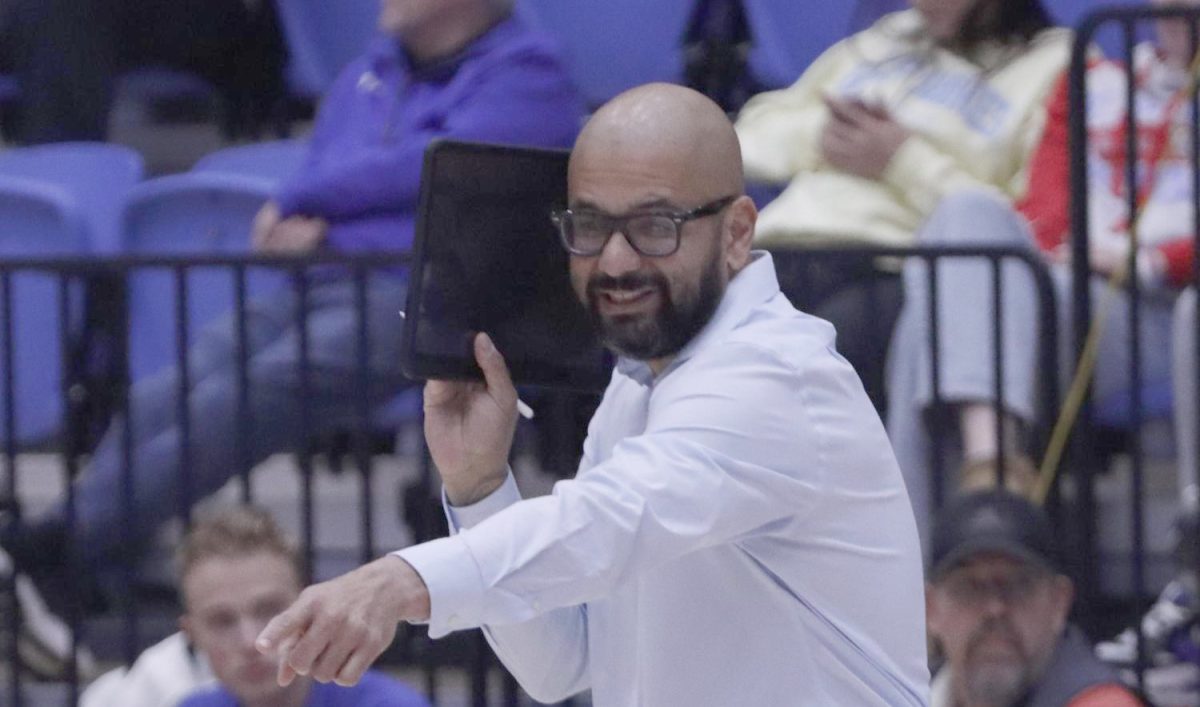Following the master plan
Eastern officials have a dream.
With projects like Doudna getting closer to completion, their dream is becoming reality.
Doudna is in what the Facilities Planning and Management Web site calls the “finishes phase” and is one of the projects outlined in Eastern’s Campus Master Plan.
Steve Shrake, associate director of design and construction, said the master plan addresses building needs that will help facilitate learning.
“A master plan, in many ways, is like a business plan,” he said. “You develop a plan that is specific to the process you need to manufacture, manage or sell your product. At Eastern, our service is education, so our plan needs to be built around our academic needs.”
Gary Reed, director of facilities planning and management, said the master plan is like facilities’ “holy grail.”
Staff working in facilities planning and management reference the plan every time a new building is considered or someone wants to change the use of an area.
Reed said the plan provides both long-term and short-term projects for campus.
The campus master plan is a 15-year vision, and Shrake said this 15-year period is broken up into three five-year intervals.
Shrake said most master plans incorporate a degree of dream in the long range.
He explained Eastern’s master plan is realistic for the first five-year period, while the last five years of the plan incorporate “dreams” for the campus. Shrake said even though the last years of the plan involve dreams, the projects outlined are not unrealistic.
Some of the long-term projects detailed in the master plan include the completion of a Convocation Center on Lincoln Avenue between First and Fourth streets, an addition to Lantz Arena and student apartment housing along Ninth Street.
The projects in this ultimate development phase can take 10 or more years to complete, according to Eastern’s master plan.
Depending on the availability of capital resources, some of the projects may have to be done in multiple phases.
Jill Nilsen, vice president of external relations, said the current master plan was approved by the Board of Trustees in 1999 and was last updated in 2002.
Shrake said while there is no requirement for how often the master plan needs to be updated, he believes updates should be made about every five years.
He said when the plan was approved in 1999 and updated in 2002, there was no consideration for the university’s new nursing program, a two-year program designed for registered nurses who want to earn a bachelor’s degree.
The program started in fall 2007.
The master plan needs to be updated to include the new program, Shrake said.
“The master plan is about infrastructure and building needs based on academics,” he said. “The update involves facilities, academics and administration sitting down to inform facilities what is changing in the academic world so that we can plan for infrastructure projects that will dovetail with academic research or program changes.”
By keeping the plan up-to-date, more reality can be applied to the second five-year period – and the “dream” can be stretched out, Shrake said.
Reed agrees the plan needs to be updated regularly because of its 15-year span.
“The capital process requires years of project planning between concept and reality,” he said. “The master plan needs to be kept fresh, always reflecting the direction for the ‘physical’ EIU as dictated by our administration and board.”
However, any changes to the plan are driven by the administration, Shrake said. He said no updates to the master plan would be made until a committee meets to discuss campus needs.
There is a process for making changes to the plan by campus constituents, Shrake said.
The vice president of business affairs presents the approved changes in an annual report to the Board of Trustees, usually at their June meeting.
The location of the Alumni clock and the proposed location of Textbook Rental were both changed using campus constituents, he said.
Eastern is now in Phase Two of the campus master plan, which proposes a new Student Services Building, University and Lifelong Learning Center and student suite housing. The second phase of the plan also includes the renovation of several academic buildings.
Barbara Harrington can be reached at 581-7945 or at bjharrington@eiu.edu.



































































